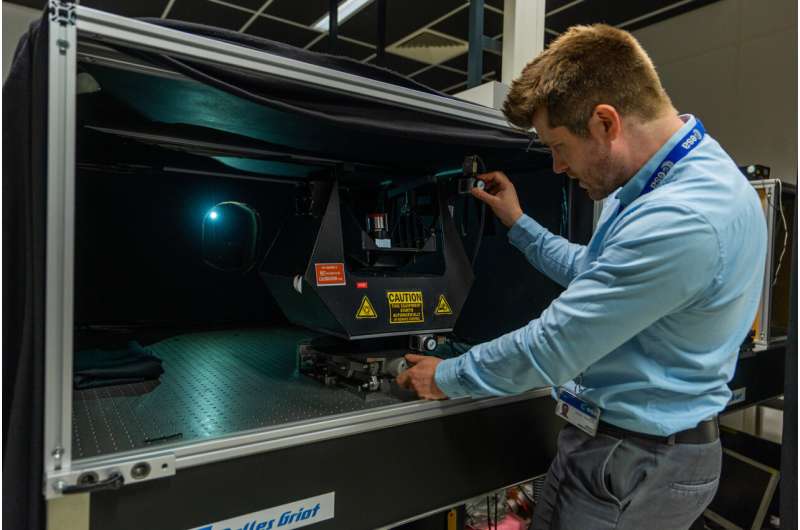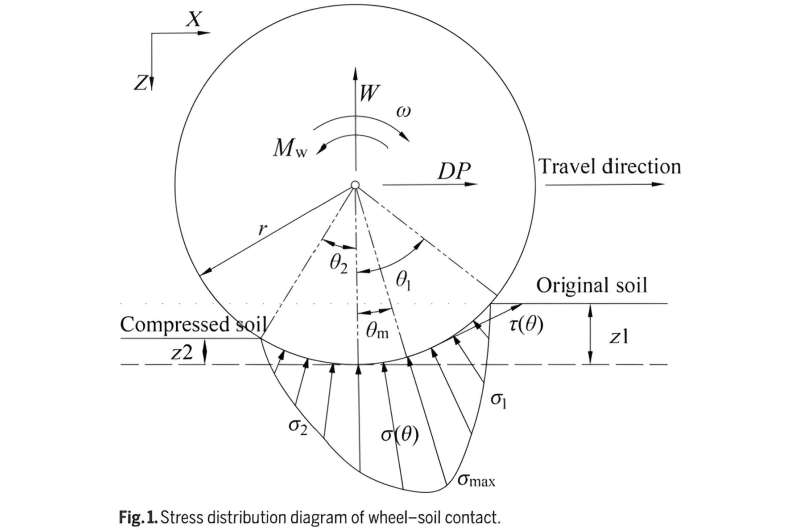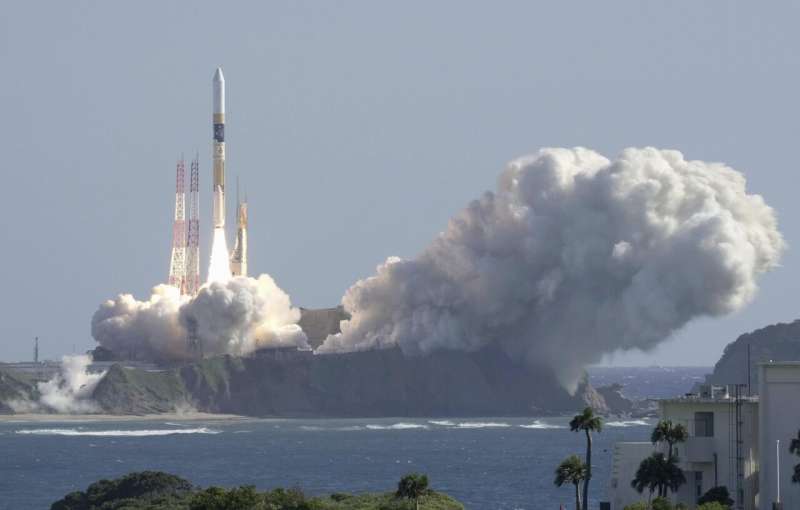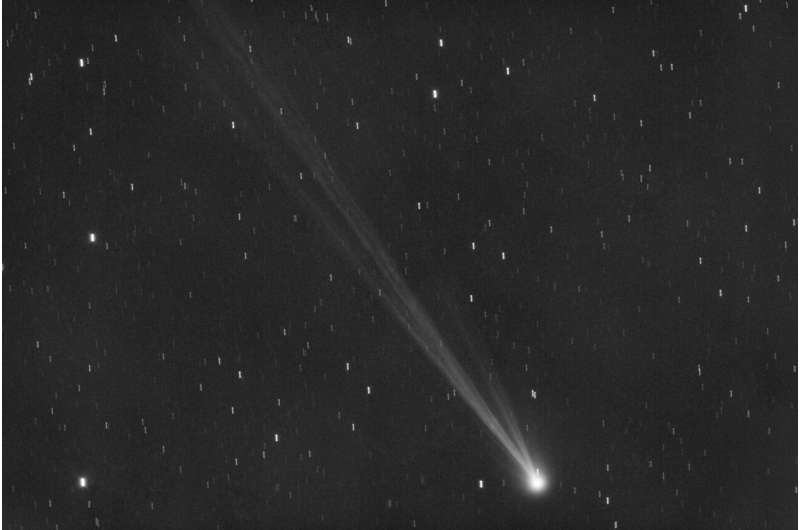
Copernical Team
Psyche on track for liftoff next month
 Bound for a metal-rich asteroid of the same name, the Psyche mission is targeting Oct. 5 to launch from NASA's Kennedy Space Center in Florida.
The spacecraft's solar arrays are folded like an envelope into their stowed position. Xenon gas - fuel for the journey to the asteroid belt - is loaded. All four thrusters have passed their final tests. Engineers have confirmed the massive high-gai
Bound for a metal-rich asteroid of the same name, the Psyche mission is targeting Oct. 5 to launch from NASA's Kennedy Space Center in Florida.
The spacecraft's solar arrays are folded like an envelope into their stowed position. Xenon gas - fuel for the journey to the asteroid belt - is loaded. All four thrusters have passed their final tests. Engineers have confirmed the massive high-gai Week in images: 04-08 September 2023

Week in images: 04-08 September 2023
Discover our week through the lens
Thumbs up for training
 Image:
ESA project astronaut Sławosz Uznański from Poland inside the Columbus mockup at EAC.
Image:
ESA project astronaut Sławosz Uznański from Poland inside the Columbus mockup at EAC. An artificial star for testing the optical performance of startrackers

Like mariners of old, spacecraft steer by the stars—using combinations of telescopes, cameras and computers called startrackers to recognize stellar constellations to calculate their own position in space.
The test bench seen here generates an artificial star-like light source to test the optical performance of startrackers.
Part of the Guidance and Navigation Control (GNC) Attitude and Orbit Control (AOCS), and Pointing Laboratory, based at ESA's ESTEC technical center in the Netherlands, this test bench combines a two-axis precise rotating table with a single star simulator—simulating the light coming from infinity from a star of a given brightness and color.
Produced in house by the lab team, the purpose of this facility is to characterize or calibrate a startracker in terms of distortion, chromatic aberration and other optical variables.
The GNC, AOCS and Pointing Lab works on manner of technologies related to a spacecraft's ability to derive its orientation and location in space. It is one of a suite of ESA technical labs addressing all aspects of spaceflight.
Provided by European Space Agency
A method for traction ability research of rover wheels on mixed planet terrain with movable stones

The Chang'e-6/7/8 exploration mission has been announced officially by China recently, and the international lunar and Mars research station plans will be carried out within the 2030s. It can be predicted that China's future lunar and Mars surface exploration activities will last longer, have a larger exploration range, and have a more complex terrain to traverse and explore, which will pose severe challenges to the working performance of the planet rover and its adaptability to the planet surface environment.
One of the key problems will be to study the relationship between the mechanical properties of planet soil and the traction performance of the planet rover's wheels. The mixed terrains of terramechanics research are mainly composed of static stones and loose soil.
Whereas, the movement behavior of stones is often ignored while analyzing the influence of the wheel's traction performance caused by mixed terrain.
The Astronaut Center of China 90-d head-down bed rest: Overview, countermeasures, and effects

When astronauts enter space, they are exposed to weightlessness. Physiological and psychological challenges are waiting ahead. They may have a puffy face and experience space motion sickness, cardiovascular deconditioning, muscle atrophy, and bone loss.
Moreover, long-term spaceflight has been shown to result in 83% of astronauts with post-flight orthostatic intolerance. For such problems, exercise countermeasures can be the primary approach to resolve these changes. Head-down bed rest (HDBR) simulates physiological effects in weightlessness and is widely used in countermeasure testing, and efficacy of exercise interventions has been widely studied in HDBR with different periods as well.
Usually, the long-term bed rest experiment is completed in stages, and a positive control of separated exercise countermeasures rarely tests at the same time in these experiments.
International Space Station tests show that a surface treatment can help prevent formation of biofilms in space

After exposure in space aboard the International Space Station, a new kind of surface treatment significantly reduced the growth of biofilms, scientists report. Biofilms are mats of microbial or fungal growth that can clog hoses or filters in water processing systems, or potentially cause illness in people.
Japan launches rocket carrying lunar lander and X-ray telescope to explore origins of universe

Japan launched a rocket Thursday carrying an X-ray telescope that will explore the origins of the universe as well as a small lunar lander.
The launch of the HII-A rocket from Tanegashima Space Center in southwestern Japan was shown on live video by the Japan Aerospace Exploration Agency, known as JAXA.
"We have a liftoff," the narrator at JAXA said as the rocket flew up in a burst of smoke then flew over the Pacific.
Thirteen minutes after the launch, the rocket put into orbit around Earth a satellite called the X-Ray Imaging and Spectroscopy Mission, or XRISM, which will measure the speed and makeup of what lies between galaxies.
Across the Northern Hemisphere, now's the time to catch a new comet before it vanishes for 400 years

A newly discovered comet is swinging through our cosmic neighborhood for the first time in more than 400 years.
SpaceX awaits FAA approval for Starship launch
 Elon Musk said Tuesday that SpaceX is ready to launch a second test flight of its Starship and awaits Federal Aviation Administration approval nearly five months after the first test in Texas exploded over the Gulf of Mexico.
The updated Starship, the most powerful rocket ever built, was rolled out to the launching pad where it will wait for FAA approval before setting a new date for li
Elon Musk said Tuesday that SpaceX is ready to launch a second test flight of its Starship and awaits Federal Aviation Administration approval nearly five months after the first test in Texas exploded over the Gulf of Mexico.
The updated Starship, the most powerful rocket ever built, was rolled out to the launching pad where it will wait for FAA approval before setting a new date for li 
